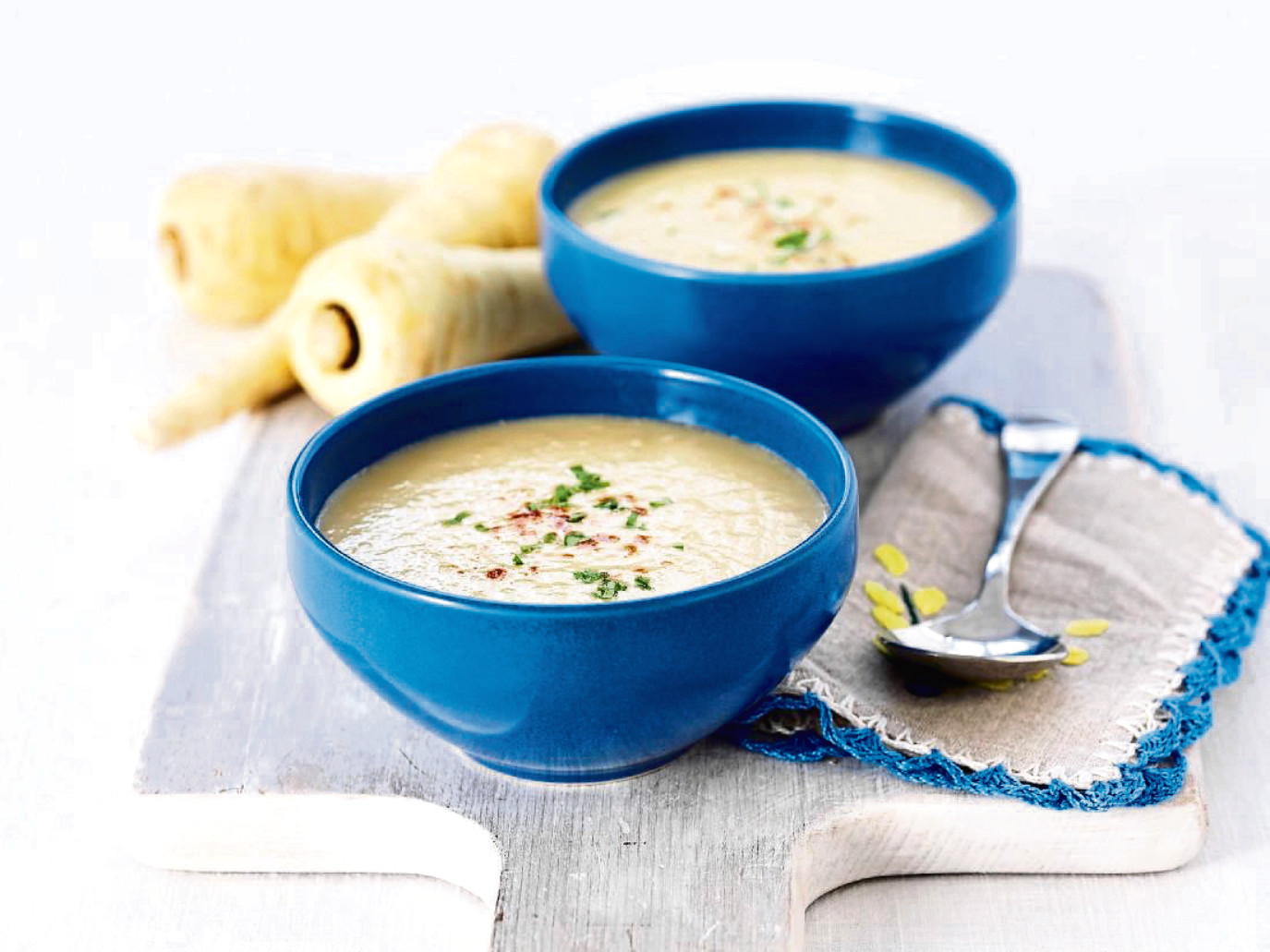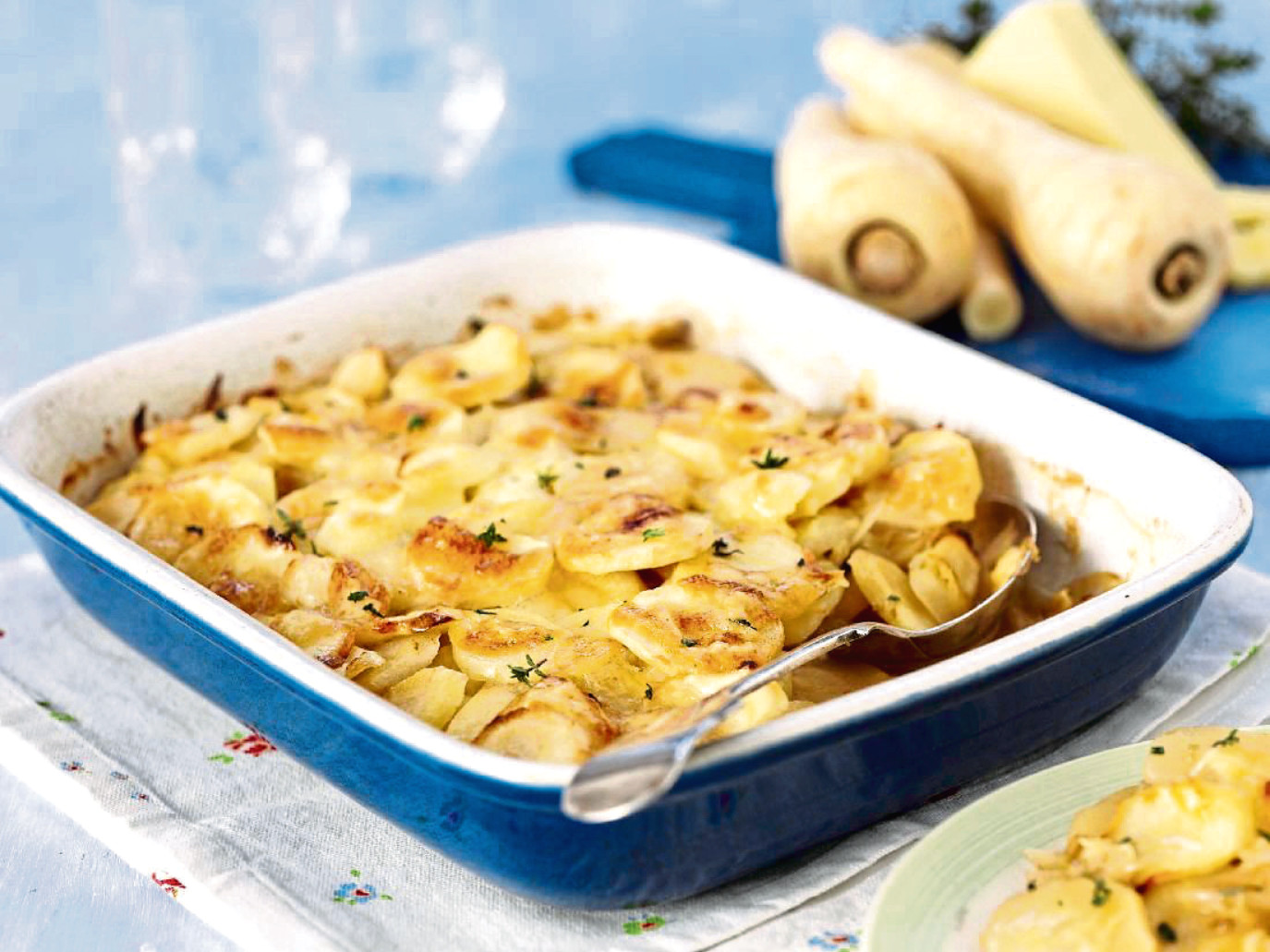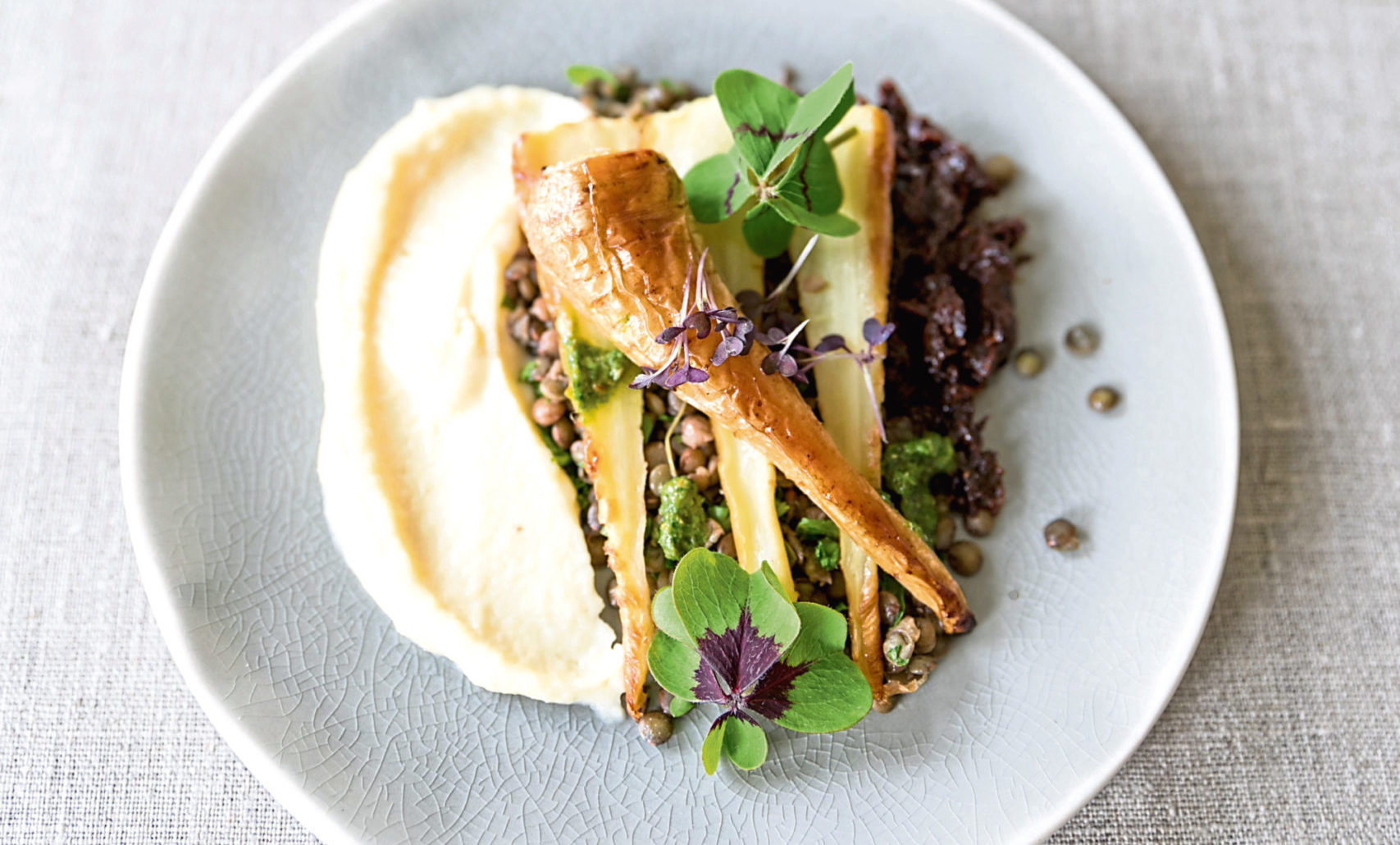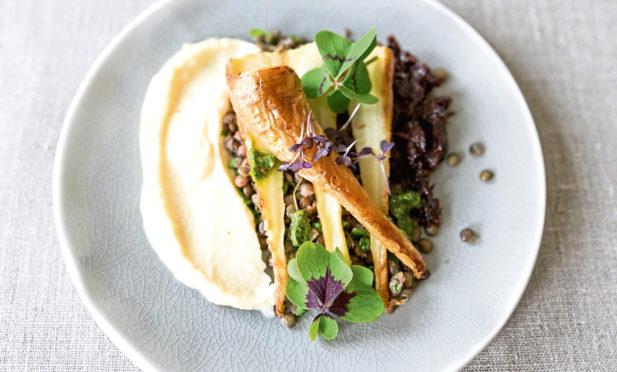A soup, a bake and a roast – how do you like to eat your parsnips?
Parsnips are arguably one of the most versatile winter root vegetables, with their ability to be roasted in honey, for instance, or in soup, and the like, it’s almost impossible to get through the winter months without it.
These recipes below help to show off the parsnip at its finest and are delicious and warming dishes.
For more recipes in this series, take a look here.
Parsnip and ginger soup

Ingredients
- 2 tbsp vegetable oil
- 1 large onion, chopped
- 750g parsnips
- 1 clove garlic, chopped
- 2cm piece root ginger, peeled and chopped
- 1.2litre vegetable stock
- 3 tbsp creme fraiche
- To serve: chopped parsley and a little ground paprika
Method
- Heat the oil in a large pan, add the onion and saute for 3-4 mins or until pale golden. Meanwhile, wash the parsnips, trim the ends and chop them into even-sized chunks.
- Add the parsnips to the pan along with the garlic and ginger, saute for 2 mins, stirring. Pour in the stock and a little seasoning. Bring to the boil, cover and simmer for 20-25 mins or until the parsnips are tender.
- Use a stick blender to puree the soup until it’s nice and smooth. Add the creme fraiche and taste for seasoning.
- Serve hot in bowls, sprinkled with a little parsley or paprika if liked.
Recipe courtesy of britishgrowers.org
Layered parsnip bake

Ingredients
- 1 tbsp sunflower oil
- 1 large onion, sliced
- 1 garlic clove, crushed
- 750g parsnips, peeled and trimmed
- 2 tsp chopped fresh thyme
- 150g cheddar cheese, crumbled
- Freshly grated nutmeg
- Salt and freshly ground black pepper
- 250ml hot vegetable stock
Method
- Preheat the oven to 220°C/Fan 200°C/425°F/Gas Mark 7. Heat the oil in a frying pan, add the onions and saute over a medium heat for 5 mins or until golden. Season, then reduce the heat and cook over a low heat for a further 5 mins until they are really tender and caramelised.
- While the onions cook, diagonally slice the parsnips to a thickness of a £1 coin. Lightly oil a 1.4litre (2½pt) ovenproof dish.
- Scatter half the onions over the base of the dish and top with half the parsnips, half the thyme, a third of the cheese, a little nutmeg and plenty of seasoning.
- Top with the remaining onions and parsnips, then pour over the stock. Sprinkle over the remaining cheese and season again.
- Place the dish on a baking tray then cover and bake for 30mins. Remove the foil then bake for a further 20-25 mins or until the parsnips are tender and the top nicely browned. Serve hot with roast meats or poultry.
Recipe courtesy of britishgrowers.org
Roasted parsnips with lentils, zhoug and spiced prunes
(Serves 4)

Ingredients
- 1kg parsnips, scrubbed
- 1 tsp thyme leaves chopped
- 5 tbsp olive oil
- 120ml your choice of nut/plant milk alternative
- 140g puy lentils (or green lentils)
- 2 bay leaves
- 1 garlic clove, skin on and flattened slightly
- Sprig of thyme
- 1 tbsp parsley, chopped
- 80g soft, pitted prunes, roughly chopped
- ½ tsp ground cinnamon
- ½ tsp grated nutmeg
- ½ tsp ground mixed spice
- 3 tbsp boiling water
For the zhoug:
- 1 tbsp chopped coriander
- 1 tbsp chopped parsley
- 1 green chilli, deseeded and finely diced (optional)
- 1 clove garlic, crushed
- ½ tsp honey
- 2 tbsp water
To finish: Herbs such as micro parsley or purple sorrel
Method
- Preheat the oven to 180°C/Fan 160°C/350°F/Gas Mark 4. Roughly chop half of the parsnips. Place these on a baking sheet with a little olive oil, thyme, pepper and salt and mix well.
- Cut the remaining parsnips into long neat sticks measuring 10cm long. Place these on a second baking sheet with a little olive oil, thyme, pepper and salt and mix well. Roast both trays of parsnips for 15-20 minutes until they are soft and golden brown.
- Keep an eye on each tray as you may need to move the parsnips around to ensure they cook evenly.
- Remove from the oven and blend the roughly chopped parsnips with your choice of nut/plant milk alternative to form a thick puree. Season with salt and pepper. Set aside in a warm place.
- Leave the other tray of parsnips as long sticks.
- Meanwhile put the lentils in a pan with a litre of water, the bay leaves, garlic and thyme.
- Bring to the boil, reduce the heat and simmer the lentils for 15 minutes or until tender.
- Drain and discard the herbs and garlic. Mix through the olive oil and parsley and season to taste.
- Put the prunes, spices and water into the goblet of a blender and pulse to create a chunky paste. Season to taste with salt.
To make the zhoug: Put all the ingredients into a blender. Blitz briefly for a few seconds to keep the dressing quite rough.
To serve: Share the parsnip purée between four dishes. Add the lentils and prunes and then top with the roasted parsnip sticks. Drizzle with the zhoug and finish with the micro herbs.
Cook’s tip: You can use a sachet of ready-cooked puy lentils to save time. This dish would also be delicious served with a light vinaigrette dressing containing chopped herbs such as parsley and dill.
Variation: Jerusalem artichokes or sweet potato can be used instead of parsnips in this recipe.
Recipe courtesy of Dr Joan Ransley for Love Your Gut.
More from this series…
Three ways with cavolo nero: Recipes for falafel, chilli with crisps and vegetable pilaf
Three ways with haggis: A burger, pakora and stuffed cabbage leaves
